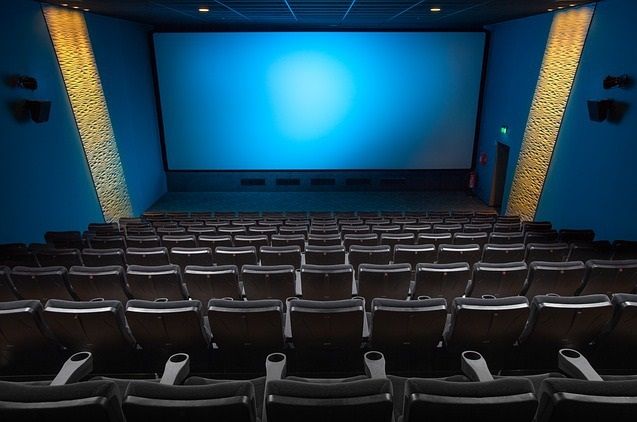Mexican cinema: Cineteca Nacional to expand its partnership with Netflix
Stay up to date with the latest on Mexican cinema covering film productions, Mexican filmmakers, cinematography, Mexican movies, and streaming.

The Cineteca Nacional closes with a large audience and hopes to consolidate its analysis with Netflix and establish the Complejo Cultural Los Pinos.
Everything seems to indicate that the Cineteca Nacional is going through one of its best moments, since for the sixth consecutive year it has kept up with audience tastes and this year it exceeded one million spectators, released more than 150 films of which 58 were national, in addition to creating an alliance with Los Pinos and Netflix.
In 2019, the Cineteca Nacional, an organism of the Ministry of Culture, continued its work to preserve the country's film memory, as well as to promote the seventh art of quality - with an open and inclusive character -, also organizing educational and cultural activities that promote the development of film culture inside and outside Mexico City.
This year, the venue offered a series of cycles and retrospectives, 28 in total, and 157 premieres, 58 of which were Mexican, while bringing together some of the most important festivals that take place in our country. Cineteca also gave continuity to the exhibitions with Gaumont, since the existence of cinema and with Buñuel in Mexico, which will be available until April 2020.
Among the films with the highest attendance between January 1 and November 29, 2019, in the first place is Dolor y Gloria, winner of the awards for best soundtrack and best actor at the last Cannes Film Festival.
By the end of 2019, the Cineteca expects to approach the figure of 1,326,000 registered in 2018 thanks to the "Roma phenomenon", a film that premiered in December with more than 70,000 attendees on a single screen". At the moment, Netflix films such as The Two Popes, The Story of a Marriage, and The Irishman are showing.
There are also two projects with Los Pinos, one is to finish the conditioning of a small room they have, another is to make a western film library, and a cultural corridor of Los Pinos.
The Cineteca Nacional will continue to offer proposals for those attending, and plans are to open The Gallery for an exhibition on Charles Chaplin and to begin a retrospective on Martin Scorsese, which will include 25 films on the Oscar winner, from Who's Knocking on My Door, released in 1967, to Silence, released in 2016.
Mexican cinema celebrates 123 years
On August 6, 1896, Mexico was able to contemplate for the first time the moving images in the cinematograph of the brothers' Auguste and Louise Lumière. 123 years have passed since then and today cinema is a compilation of lights, emotions, sounds, and even movements that are far removed from the yellowish images and the informative work for which this means of communication was born.
The start of the projections in Mexico took place just eight months after its world debut since the first show was presented in Paris, France, on December 28, 1895.
Thinking about Mexican cinema brings to mind surnames like Soler, Infante, Del Río, Félix, even Del Toro, Iñárritu, and Cuarón, but nobody thinks about Porfirio Díaz.
Thinking about Mexican cinema brings to mind surnames like Soler, Infante, Del Río, Félix, even Del Toro, Iñárritu and Cuarón, but nobody thinks about Porfirio Díaz.
"Porfirio Diaz was the first star of Mexican cinema," says Ramon Ramirez, director of Public Relations at Cinepolis in an interview with El Sol de Mexico.
The relationship he maintained and the admiration Porfirio Díaz had for French culture led the cinematographer to arrive through Europe and not the United States. For the then president, cutting-edge technology from France was synonymous with development, and cinema was no exception.
"The cinematographer has had since the end of the 19th century and the projection of stills lasted more than 100 years because it was until seven or eight years ago that he formally initiated digitalization in the world and changed from having the projection of 24 frames per second, but the projection through celluloid remained in force, although the material changed because before it was very flammable," he adds.
It is precisely the flammable material that is one of the peak moments of Inglorious Bastards, where Quentin Tarantino gives us a nod to the history of celluloid.
The conspiracy to put an end to the Third Reich, which is the plotline of the film, takes a turn when Shoshana, a persecuted Jew, decides to burn all the films to put an end to the Nazi political dome.
During World War II, Adolf Hitler's speeches were broadcast on big screens. At that time, the end of cinema was propagandistic and played a fundamental role in the dissemination of the National Socialist message of the Fürer, who relied on Joseph Goebbels, his propaganda minister, to carry his message to the end of the world.
"People went to the cinema to see the news. That was the way people found out in tents or in the first cinemas in the world. Later, fiction cinema began," Ramírez says.
Another film that interweaves the history of the seventh art is Cinema Paradiso, directed by Giuseppe Tornatore, where in addition to talking about the flammability and danger represented by the tapes of yesteryear, the director narrates how the priests of the small towns censored the parts that they considered "immoral" for the people.
"There is a film called El Cometa, directed by Marisa Sistach, that talks about the history of the exhibition of Mexican cinema in circus tents," says the director of Cinépolis.
Evolution
Ramón Ramírez comments that in cinema different technological and socioeconomic milestones marked paradigm shifts in the way we appreciate from the great classics to the Avengers saga.
"The sound was the element that had the fastest evolution because the image remained stagnant for many years in black and white," he said.
At the end of the 19th century, the cinematograph had no sound, but the format had to evolve and the tents began to set up live music.
The sound within the movies came in 1929 and then evolved into two channels, which became known as stereo, with a brand called Ultra Stereo, which divided the audio into two channels.
"Today we have the Dolby Atmos technology, which is called the Voice of God, which is so enveloping that it seems that God is speaking to you. The technology has more than 11 channels, which allows you to have a sound so involute that it looks like an airplane is passing over you," he said.
But the changes were not limited only to content or technology, as the rooms were also modified.
In Rome, Alfonso Cuarón remembers the Cine Metropolitan, through a quote from Cleo, the main character of the story, with her boyfriend. The Metropolitan was a single room the size of a theatre that is far removed from the stadium-like spaces that dominate the current panorama.
Until 1994, cinema was integrated into the prices of the basic basket, which limited the possibility of making large investments in the sector and the predominant technology, as well as the arrival of foreign brands.
Between the end of 1993 and 1994, the ticket left the basic basket, which allowed the arrival in Mexico of chains such as United Artists, Cinemark, which was bought by Cinemex, and Cinépolis was born in Tijuana, with a set of nine cinemas. Just a year later, Cinépolis opened its first website.
But the offer is not limited to stadium halls since in 1999 the company directed by Alejandro Ramírez Magaña launched the concept of VIP lounges.
"In 2003, the loyalty program of the different brands began, which encouraged people to return to theaters," he adds.
The rest of the history of cinema is made up of theaters with IMAX screens, which takes this type of screening out of the exclusivity of museums and cultural centers and brings it to the general public, as well as functions in the third and fourth dimensions.
Mexican cinema should look towards the alternative circuit
To address the lack of space for Mexican cinema in the film duopoly (Cinemex and Cinépolis), filmmaker Iván Ávila Dueñas considers it important to promote stories in alternative spaces and in art theatres, which he says "are gaining more and more strength".
In an interview with Notimex about the release of his latest film The Romantic Hairdresser, Ávila Dueñas mentioned that as part of the distribution strategy he has planned a route through the main cities of the country, to maintain an approach with the public and know what moves them and what they identify with.
For now, they have done the same in Nuevo León, Zacatecas, and Mexico City, but have yet to visit Querétaro, Tijuana, Hermosillo, Oaxaca, and Guadalajara. In the latter city, he will also present his films Adán y Eva and La Sangre iluminada, as part of a cycle of "Fantastic Cinema" from Guillermo del Toro's exhibition En casa con mis monstruos (At home with my monsters).
In this regard, Ávila Dueñas said:
"The current conditions of the exhibition are very complicated for Mexican cinema and what we are trying to do is to be close to the public. To go and present it and give us time to dialogue and feedback with the people."
According to the director, these approaches have been very pleasant, "because you realize what happened to the people, what happens to them. On Saturday the 29th I presented it at Casa del Cine, Mexico City, and one person was very moved. She came from the loss of her mother and was fully identified with the story.
What we are looking for, he added, "is a direct and frontal exhibition with the public, and try to take care of the people who like our films, to give them that attention. Mexican cinema is doing very well in terms of production levels, but we still have a bottleneck in the exhibition and apparently, we can't aspire to the duopoly.
Although he recognized that it is important to listen to the community for a possible reform of the Cinematographic Law, he mentioned that "the exhibition in Mexico is a business that is calculated to sell certain types of stories, where Mexican cinema that does not look for the box office blatantly, has no place.
He said that "we should not lose sight of the fact that cinema in Mexico is seen as a market good and not a cultural good, that's why cinema that talks about identity do not have the necessary space and we have to look for other routes.
In that sense, Ávila Dueñas, who was Arturo Ripstein's assistant in the film Deep Crimson, reflected that Mexican cinema is in search of how to exhibit their stories and how to approach the public within the spaces they have.
"We have a cultural circuit that is more and more solid, as well as networks of cineclubs. The reform of the law is important but we have to take into account that it is a particular business," concluded the Mexican filmmaker.




